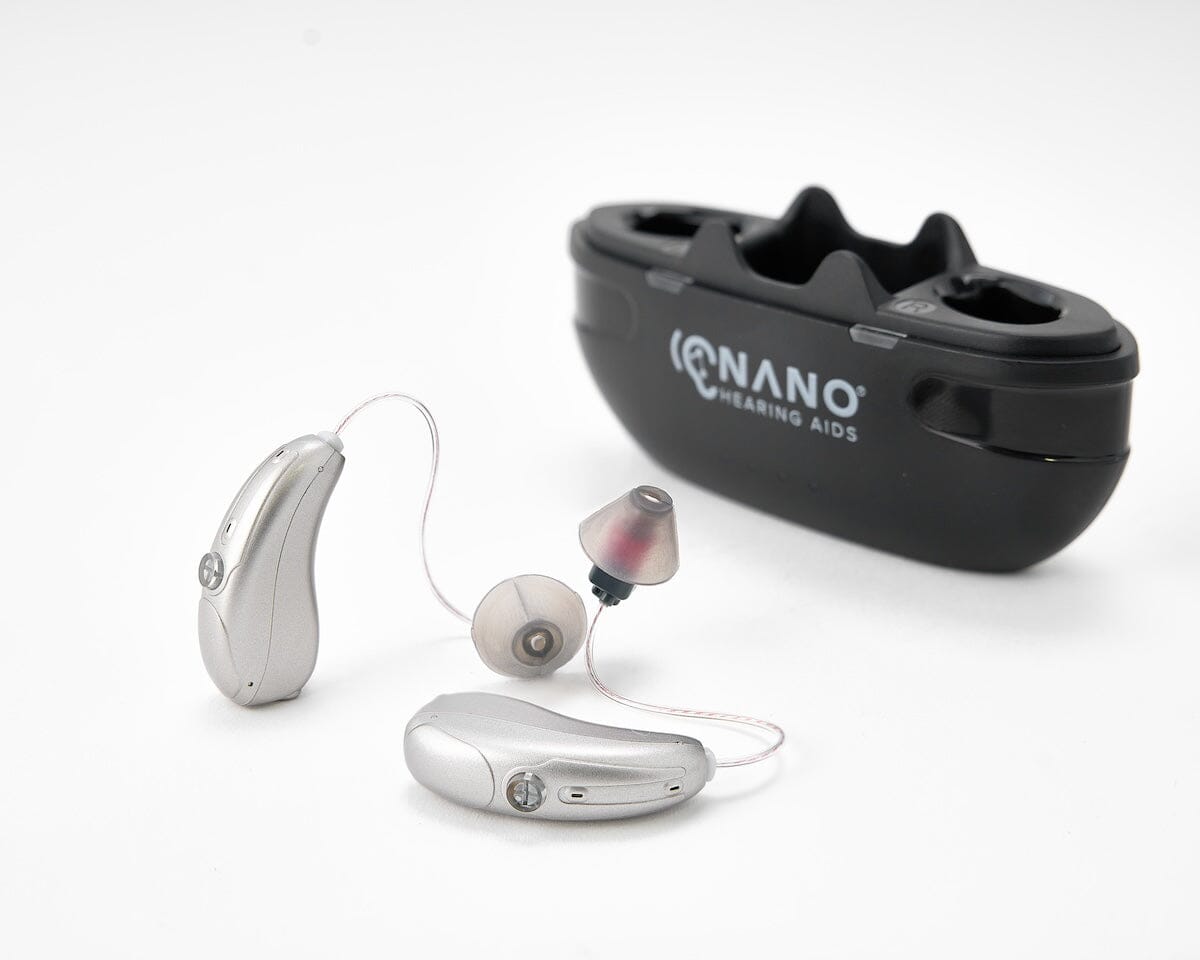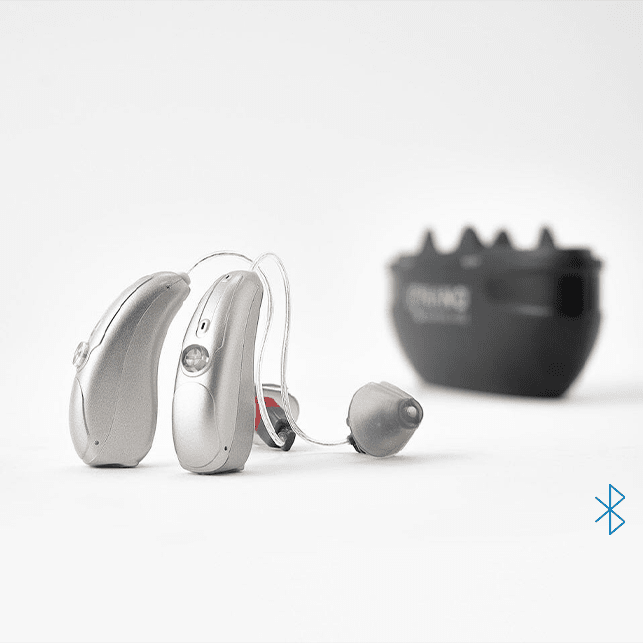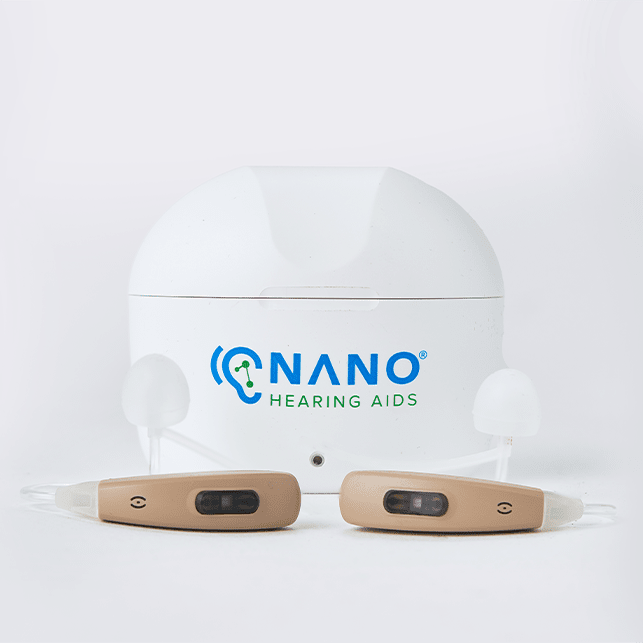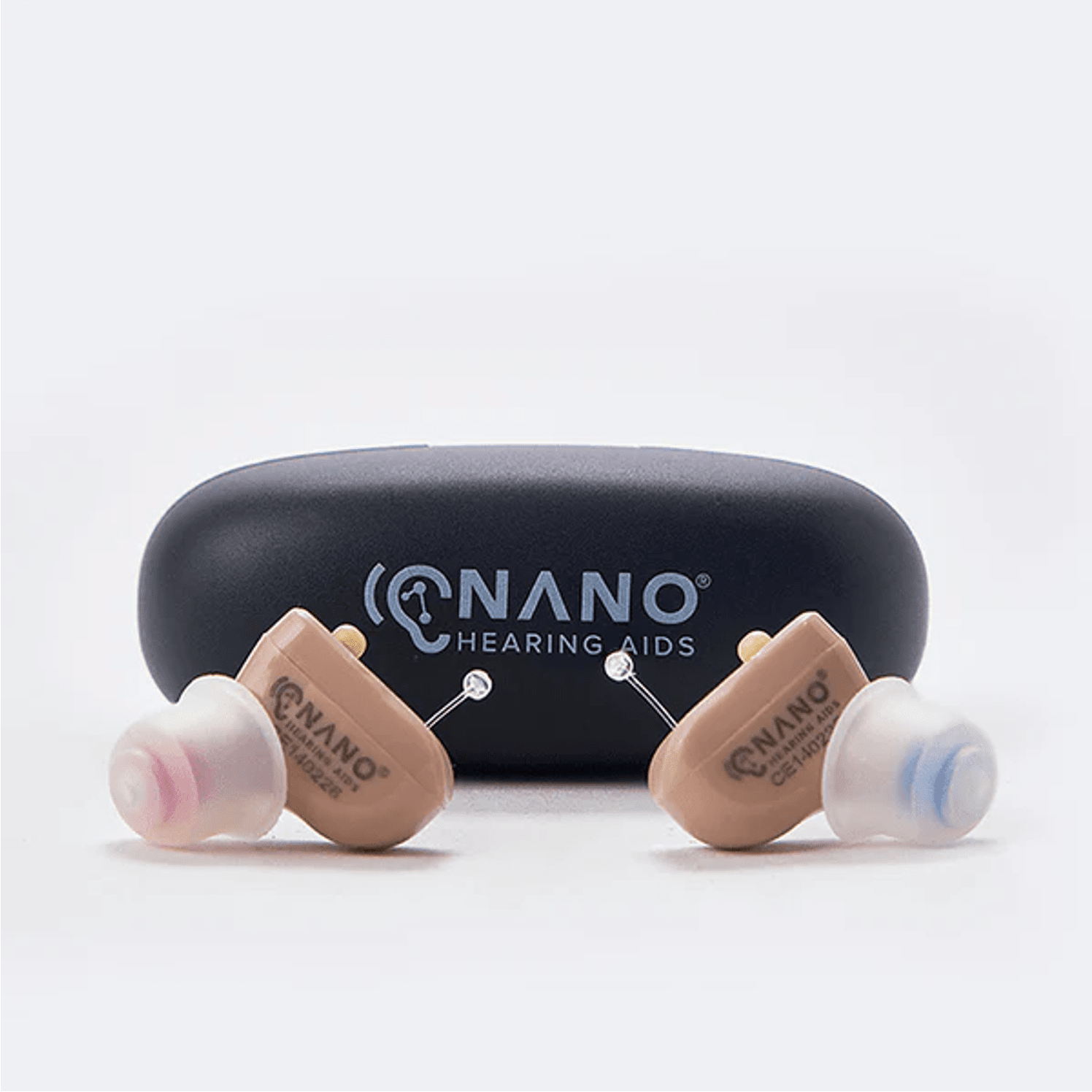Key Takeaways
- Earwax buildup is a common reason why hearing aids sound muffled.
- Infections in the ear can also cause muffled sound.
- Low or depleted batteries in hearing aids can lead to muffled sound.
- Regular maintenance and professional cleaning of hearing aids ensure optimal performance.
- Nano OTC Hearing Aids provides expert support to address muffled sound issues, ensuring clear and reliable hearing.
NANO Hearing Aids are FDA-registered, Class I devices. Our OTC hearing aids are designed for individuals over 18 years of age with perceived mild to moderate hearing impairment. With prices starting at just $297, they offer a viable solution for those looking to improve their hearing without breaking the bank.
Identifying the Causes of Muffled Sound in Your Hearing Aid
The first step in fixing the muffled sound in your hearing aid is Identifying the cause. Potential factors include earwax buildup, ear infections, low batteries, and improper maintenance.
The Earwax Issue
How Earwax Affects Hearing Aids
When earwax accumulates, it can block the microphone or speaker of your hearing aid, leading to muffled sound. This blockage prevents the hearing aid from picking up and enhancing sounds effectively.
Signs Earwax Might Be the Problem
- Visible earwax buildup on your hearing aid
- Reduced volume or clarity even after adjusting the settings
- Intermittent sound or complete blockage of sound
Safe Techniques to Remove Earwax
- Use a soft, damp cloth to clean the outer part of your ear.
- Over-the-counter earwax removal drops can help soften and remove earwax.
- Avoid using cotton swabs, as they can push earwax further into the ear canal.
- If earwax buildup is severe, consult a healthcare professional for safe removal.
Regular cleaning can prevent earwax from causing muffled sounds in the future.
The Infection Interference
Common Ear Infections Linked to Muffled Sound
- Otitis externa (outer ear infection)
- Otitis media (middle ear infection)
- Inner ear infections
The Impact of Ear Canal and Inner Ear Infections
Outer ear infections (swimmer's ear) occur when bacteria or fungi infect the ear canal, causing swelling and discharge, leading to muffled sound. Middle ear infections involve the area behind the eardrum, causing pain, fever, and fluid buildup. Inner ear infections affect the innermost part of the ear, causing dizziness and hearing loss.
Treating Infections to Restore Clear Hearing
Treating ear infections promptly can help restore clear hearing. Treatment options depend on the type and severity of the infection and may include:
- Antibiotic or antifungal ear drops
- Oral antibiotics for more severe infections
- Over-the-counter pain relievers to reduce discomfort
- Keeping the ear dry and avoiding inserting objects into the ear
Once the infection is treated, your hearing should return to normal, and the muffled sound should resolve.
Address common issues like muffled sound through proper maintenance and settings adjustments

Checking and Replacing Batteries
- Open the battery compartment and remove the current battery.
- Inspect the battery for signs of corrosion or leakage.
- Insert a new battery, ensuring it is placed correctly with the positive side facing up.
- Close the battery compartment and turn on the hearing aid to check if the sound quality has improved.
Rechargeable Hearing Aid Battery Checks
- Place your hearing aids in their charging station and ensure they are correctly aligned.
- Check the indicator light to confirm that the hearing aids are charging.
- Allow the hearing aids to charge fully, which may take a few hours.
- Once fully charged, remove them from the charger and test the sound quality.
Hearing Aid Maintenance
Regular Cleaning Procedures
- Remove the hearing aids from your ears and turn them off.
- Use a soft, dry cloth to wipe the exterior.
- Gently brush away earwax or debris from the microphone and speaker using a hearing aid cleaning brush.
- If your hearing aids have earmolds, remove and wash them with mild soap and water—ensure they are completely dry before reattaching them.
Inspecting the Microphone and Speaker
- Use a magnifying glass to examine the microphone and speaker openings.
- If you see debris or earwax, use a small brush or a hearing aid cleaning tool to remove it carefully.
- Check for physical damage, such as cracks or dents, that might affect sound quality.
- If you find any damage, consult a professional for repairs or replacements.
Using a Professional Cleaning Service
- Consider scheduling a professional cleaning service every six months or as recommended by your hearing care provider. This can help maintain the longevity and performance of your hearing aids.
Adjusting Settings and Volume
Fine-Tuning for Clarity
- Use the app or manual controls to access the settings menu.
- Adjust the volume to a comfortable level.
- Experiment with different sound profiles to find the best clarity.
- Save the settings once you find the optimal configuration.
Resetting Your Hearing Aid
- Turn off the hearing aid.
- Remove the battery or place the hearing aid in its charging station.
- Wait for a few minutes before turning it back on.
- Check the sound quality to see if the reset has resolved the issue.
When to Seek Professional Adjustment
If the sound is still muffled, seek professional help. A hearing care professional can examine your hearing aids and make necessary adjustments. Schedule an appointment if persistent issues occur—professional adjustments can significantly improve performance.
Changes in Hearing Loss
Tracking Your Hearing Health
- Pay attention to changes in your ability to hear conversations or sounds.
- Keep a journal of difficulties you experience with your hearing aids.
- Note instances of muffled sound or other issues.
Scheduling Regular Hearing Tests
- Aim to schedule a hearing test at least once a year or as recommended by your hearing care provider.
- During these tests, your hearing care professional can assess your hearing levels and adjust your hearing aids.
- Regular tests detect changes in your hearing early and ensure your hearing aids are adjusted accordingly—improving your auditory experience and preventing issues like muffled sound.
Updating Hearing Aid Programming
- Visit your hearing care professional for a hearing test.
- Discuss changes in your hearing and specific issues.
- Your hearing care professional will adjust the programming based on test results.
- Test the updated settings to ensure improved sound quality and clarity.
Regular updates to your hearing aid programming can significantly improve your hearing experience.
Maintaining Optimal Hearing Aid Performance
Addressing muffled sound in hearing aids involves regular maintenance, proper cleaning, checking batteries, and adjusting settings. Understanding the common causes and following the recommended steps ensures your hearing aids provide clear and crisp sound.
Your hearing aids enhance your auditory experience. Taking proactive steps to maintain them will help you get the most out of your hearing aids and improve your overall quality of life.
Key Recommendations for Maintaining Clear Hearing
- Clean your hearing aids regularly to prevent earwax buildup.
- Check and replace batteries as needed to ensure full power.
- Schedule regular hearing tests and update your hearing aid programming.
- Seek professional help for persistent issues or necessary adjustments.
- Keep your ears clean and treat any infections promptly.
If you experience muffled sound or other issues with your hearing aids, address them promptly. Ignoring these problems can lead to further complications and reduced hearing quality. Taking immediate action ensures your hearing aids provide the best possible support for your hearing needs.
Maintaining clear hearing is important for your overall well-being and quality of life. Take care of your hearing aids, and they will take care of you.
How Nano Hearing Aids Can Help
Nano Audacity RIC OTC Hearing aids

At Nano OTC Hearing Aids, we understand the importance of clear and effective hearing aids. With over seven years of experience, our over-the-counter (OTC) hearing aids are designed to provide exceptional sound quality and are easy to maintain. Nano hearing aids are FDA registered, Class I devices, ensuring they are safe and effective for everyday use.
Our Audacity RIC model is our flagship device, offering reliable performance and advanced features. With highly desirable features like Bluetooth and advanced noise and feedback cancellation technology, the Audacity RIC is the perfect device for those seeking the best hearing experience from an OTC hearing aid.
If you're experiencing muffled sound or other issues with your hearing aids, consider trying Nano Hearing Aids. Our devices are supported by our customer service team available to you 24/7. We are ready to address your questions and needs at any time!
Frequently Asked Questions (FAQ)
How often should I clean my hearing aid?
Clean your hearing aid daily to prevent earwax and debris buildup, ensuring optimal performance and longevity.
What should I do if earwax keeps building up?
Use over-the-counter earwax removal drops or consult a healthcare professional for safe removal. Regularly clean your ears and hearing aids to prevent excessive buildup.
Can I use any type of battery for my hearing aid?
No, use the specific type of battery recommended for your hearing aid model. Using the correct battery ensures optimal performance and prevents potential damage to your device.
How do I know if my hearing aid needs reprogramming?
If you notice changes in your hearing or experience issues like muffled sound, it might be time to reprogram your hearing aid. Regular hearing tests and consultations with your hearing care professional can determine if reprogramming is necessary.
Why Should I Choose Nano Hearing Aids?
Nano Hearing Aids employs a team of US-based product experts who are available 24/7 to troubleshoot your device. Not only do you receive superior devices with the latest technology and hardware, but you also benefit from the peace of mind provided by our proactive support team.






